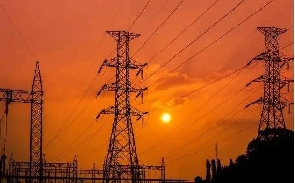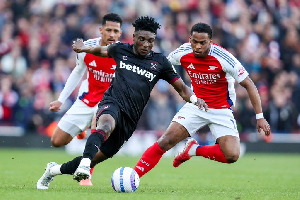According to a 2020 World Bank Report on the percentage of populations in various countries with access to electricity, Ghana (85.9%) was second only to Gabon (91.6%) in sub-Saharan Africa.
Take note that this league table discounts small island nations like Comoros (86.7%), Cape Verde (94.2%), Seychelles (100%) and Mauritius (99.7%). The average for Sub-Saharan Africa was 46.7%. More recently, the Ghana 2021 Population and Housing Census has revealed that access to electricity in Ghana has risen to 86.6%.
On the surface, Ghana’s performance is very impressive, especially when you consider that our northern neighbour, Burkina Faso is at 19% and our fairly well-endowed western neighbour, Cote D’Ivoire, is at 69.7%.
In spite of Ghana’s relatively impressive electricity access performance, the real story on the ground, especially in rural Ghana, and Northern Ghana in particular, is not very flattering. While electricity access in urban Ghana is as high as 94.7%, access in rural Ghana is only 74%.
More relevant to this discussion however, is that while access to electricity in rural Central Region is 86.2%, rural Eastern Region 80.0% and rural Bono Region 71.4%, access to electricity in rural Upper West Region is 63.3%, rural Savannah Region 44.8% and rural Upper East Region 43.5%. (All data from Ghana 2021 Population and Housing Census).
Ghana may have made giant strides in access to electricity per se but the questions that agitate the minds of development-minded Ghanaians are:
1. What is the availability of this electricity?
2. What is the quality? and
3. What is the reliability?
Just as the impressive presence of street light poles in Ghanaian cities do not translate into the availability and reliability of street lights at night, so the ubiquitous presence of electricity pylons and lines across the length and breadth of Northern Ghana does not guarantee the availability of reasonable and useable electricity in Northern Ghana.
Evidence acquired from recent personal experiences in two regions of Northern Ghana, the Upper West Region and the Savanna Region, reveal how illusory and unsatisfactory electricity supply to these regions of the North is. I can bet my last cedi that the situation is not different in the other three regions, the Upper East North East and Northern Regions.
Apart from daily and recurrent power outages when power is available, it is of such dubious quality that it is a veritable threat to all electrical appliances like machines and gadgets.
All small-scale enterprises and medium-scale and agro industries suffer excessively from the haphazard supply, erratic voltage and huge power surges which damage or destroy sensitive equipment in no time.
The tragedy of the situation is best understood when you consider that all serious businesses in the North have to install an electrical generating plant and run these plants almost on a daily basis, unlike similar businesses in Southern Ghana which infrequently use generators on the few occasions that electricity goes off.
No sensitive gadget can be installed without a voltage regulator or stabilizer of some kind. No wonder, many fledgling industries in the agro-manufacturing sector in Northern Ghana fold up in a short space of time.
At the 3rd Northern Ghana Development Summit held at Jirapa, Upper West Region, in November 2021, the obstacle posed by unreliable electricity in the attraction and maintenance of investor interest in Northern Ghana was identified as one of the fundamental challenges to changing the development narrative of the north.
Obviously, one of the key factors investors consider is the availability and reliability of electricity to sustain their operations. Several ghostly structures of dead industries and businesses, large and small, litter the landscape of Northern Ghana; many of these threw in the towel after battling incessantly with poor and unreliable electricity, among other factors.
Taking cognizance of the real infrastructural and logistic challenges which already exist in Northern Ghana like poor transportation infrastructure, insufficient health, social and welfare facilities and distance from markets, the least that should be guaranteed to entice investors should be reliable electricity, especially since the Bui Dam is partially located in the Savanna Region, and Northern Ghana is the basin of the Volta river.
Apart from the Afram river, the major tributaries of the Volta river, the Black Volta, the White Volta and the Oti river draw their waters from the North.
Recently, the media has been awash with several incidents of conflict involving the Northern Electricity Company (NEDCo) and the communities it serves.
This climate of conflict has generated a palpable negative animus against NEDCo in Northern Ghana which is impacting the operations of the service provider severely. Many of these conflicts derive from the unsatisfactory electricity supply and the consequent perception by consumers that NEDCo bills do not correctly reflect these unsatisfactory services.
Invariably, the reluctance of customers to pay their bills because they are dissatisfied with the services of NEDCo further aggravates the unhealthy financial position of NEDCo, making additional investment in infrastructural improvements almost impossible.
There is little doubt that in the race to demonstrate success in accessibility of electricity to Ghanaians for political point-scoring, not much investment has been injected into the integrity of the electricity infrastructure and the resultant availability of redundancy to cater for quality of service, reliability and emergencies.
In the midst of all these difficulties with service quality in Northern Ghana, where is the regulator, the Public Utilities Regulatory Commission (PURC)? A few weeks ago, a high-powered PURC delegation, led by the new Executive Secretary, Dr. Ishmael Ackah, was in Tamale to resolve one of the recurrent incidents involving NEDCo and its customers.
These infrequent interventions by PURC HQ are not the answer to customer dissatisfaction in Northern Ghana. Twenty-five years after the establishment of the PURC (1997), the utilities regulator which is mandated to, among other functions:
“1. Protect the interest of consumers and providers of utility services; 2. Monitor and enforce standards of performance for provision of utility services; 3. Receive and investigate complaints and settle disputes between consumers and (any) public utility… has only two offices in Wa and Tamale in the Upper West and Northern regions respectively.
PURC has no offices for the Savannah, North East and Upper East Regions. Given the existence of electricity consumers in the 54 municipalities and districts in the North, one would have expected not only regional offices of the PURC, but as a minimum, strategically located zonal offices to deal with customer/consumer complaints from a collection of municipalities and districts.
With the patchy and insufficient internet coverage in Northern Ghana, how are consumers of dubious electricity in Salaga (Savannah region), Zebilla (Upper East Region) or Nakpanduri (North East Region) expected to file their complaints? How far has the PURC protected “the interest of consumers”, and how has it “monitored and enforced standards for provision of utility services” in Northern Ghana? Under the circumstances I cannot be faulted if I concluded that the PURC has abandoned the North to the pain and suffering of uncertain and unsatisfactory electricity.
For Northern Ghana, the presence of electricity which is not fit for purpose is an unmitigated disaster. There are several Northern communities which officially have electricity but an on-the-ground audit will show that less than 20% of each supposedly ‘electrified’ community have been connected.
In many cases, the electricity passes by the community or over the community without any connections whatsoever. It would appear that the policy implementers were more fixated with ticking an accessibility box than actually making this fundamental development resource available to lift people out of poverty and destitution.
Many potential investors have pulled the brakes on investment in Northern Ghana because of this electricity conundrum. Electricity has been reduced to the provision of light to dispel darkness, and not a resource to power businesses and industries. Until the electricity challenge is tackled from a development-input perspective, all the grand plans for even small-scale and cottage industries in Northern Ghana will remain mere illusions.
In view of the dangerous neighbourhood in which Ghana finds itself, to wit the West African sub-region, it is imperative that infrastructural obstacles like poor electricity are tackled expeditiously to provide adequate power to encourage the establishment of small-scale and cottage industries to engage the time and energies of the restless youth of this vulnerable part of Ghana.
There are many local, indigenous and foreign investors who have expressed the willingness and enthusiasm to invest in the North but cannot because of the untrustworthy electricity situation. Certainly, the presence of several idle hands and minds in Northern Ghana pose an existential threat to our collective peace.
Unfortunately, the most dangerous threat to peace in Ghana, Islamic jihadi terrorists, are rampaging only a few kilometres across our northern border with Burkina Faso. We must employ pragmatic, practical and functional programmes and projects to shield, protect and occupy the enthusiastic but idle and jobless youth of Northern Ghana least they imbibe the poison of Islamic extremism. Adequate and useable electricity will help tremendously.
It is because of this deceptive illusion of electricity in Northern Ghana, that all development-minded Ghanaians are waiting impatiently for the construction of the Pwalugu Multi-Purpose Dam (PMD).
PMD is planned to provide 60MW, which is a 50% addition to the power currently consumed in Northern Ghana. Obviously, this addition will address many of the challenges confronting citizens and potential investors in Northern Ghana. PMD, however, is currently yet to commence; what can be done in the interim to ensure that the North does not drift further into poverty and destitution, with the consequent potential dangers to national security, because of inadequate, unreliable and deficient electricity?
Opinions of Sunday, 15 January 2023
Columnist: Major Albert Don-Chebe (Rtd)







![Former President Akufo-Addo [L] and Okatakyie Afrifa Mensah Former President Akufo-Addo [L] and Okatakyie Afrifa Mensah](https://cdn.ghanaweb.com/imagelib/pics/587/58758132.295.jpg)











